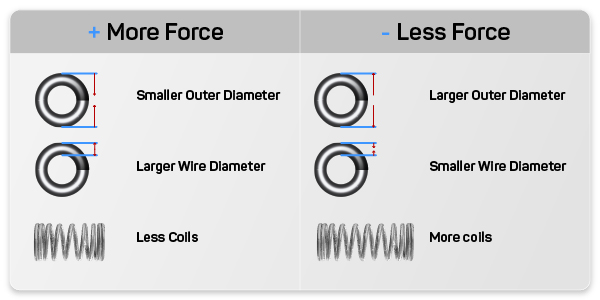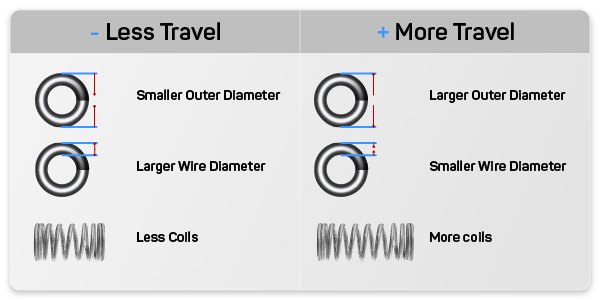Compress Springs
Definition
The action of placing a load or force on a coiled compression spring or helical spring thus pushing and compressing it down to a loaded height.
How much load must you apply when you compress your spring down to your desired loaded height?
To compress springs to a specific loaded height, you must know the spring’s rate. Rate is the constant amount of force and travel your helical compression spring exerts per inch of travel while being compressed. Spring rate is a constant value, therefore as you compress the spring the force will increase in a constant manner.
How much travel can you achieve when you compress your spring?
Most people might think that a spring will successfully travel down to it’s solid height or until coil bind. This is true some of the time but there will be times when a coiled compression spring will safely travel a limited distance. This is due to your spring’s physical dimensions. If you have a small spring index or if you have too much pitch between the coils, your spring will be highly stressed thus not giving you the amount of safe maximum travel to reach solid height. Please see the force and travel charts below for reference. As you can see when comparing the force chart and the travel chart, a small outer diameter or less coils will make your coiled compression spring stronger and stiffer but will also give you less travel.


What is the difference between safe maximum travel and safe maximum travel considering solid height?
Safe maximum travel considering solid height, is the travel you may achieve out of your coiled compression spring due to its limitations of the actual design. In case that the spring is able to safely travel down to its solid height, the amount of travel of the stated spring will be that of the solid height being subtracted from the coiled compression spring’s free length. Safe maximum travel, on the other hand, is the amount of travel that you may achieve out of your coiled compression spring if you were to increase its free length. As explained before, too much pitch between your coiled compression springs can cause your spring to not be able to compress down to it’s solid height or coil bind height, but if there is minimal pitch, you may be able to increase your coiled compression spring’s free length to obtain more travel.





